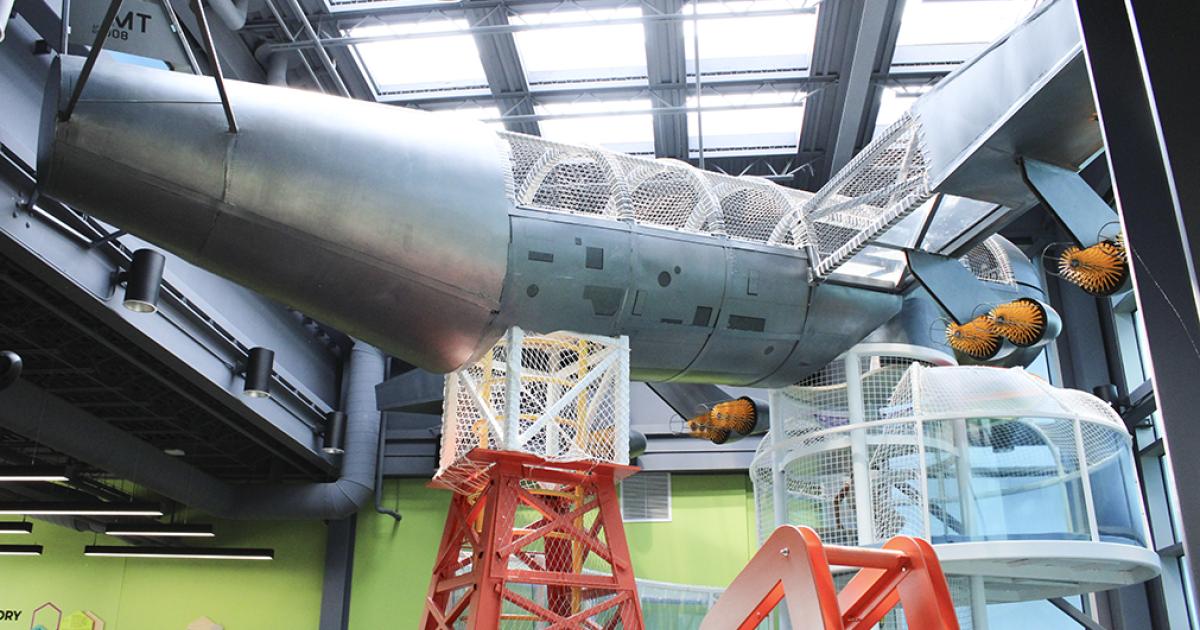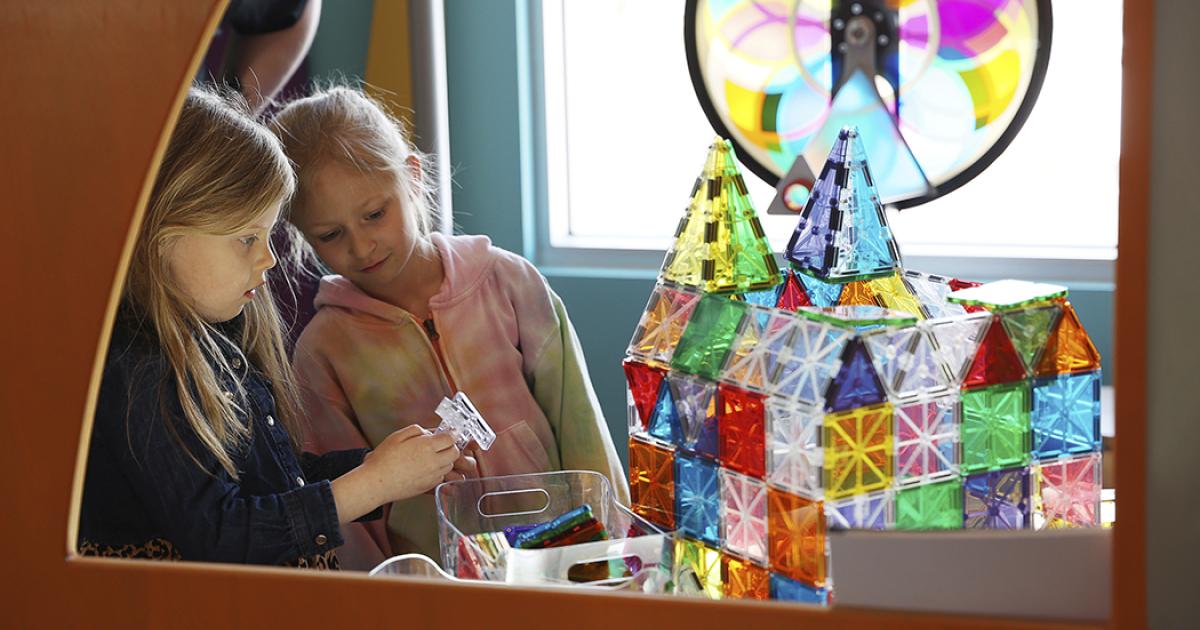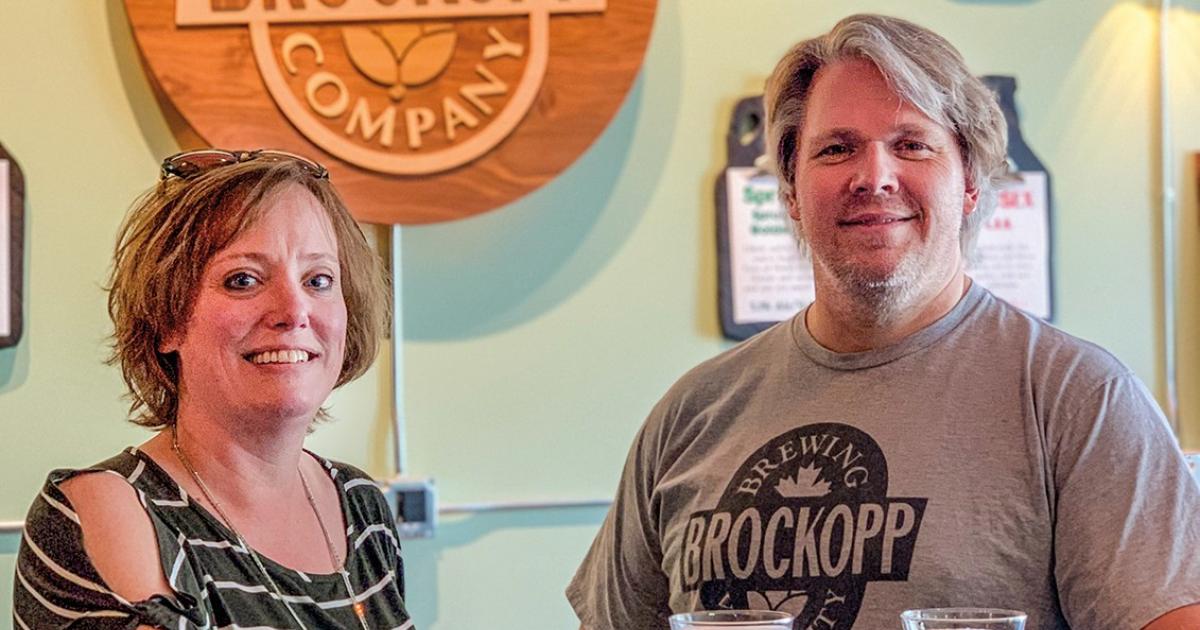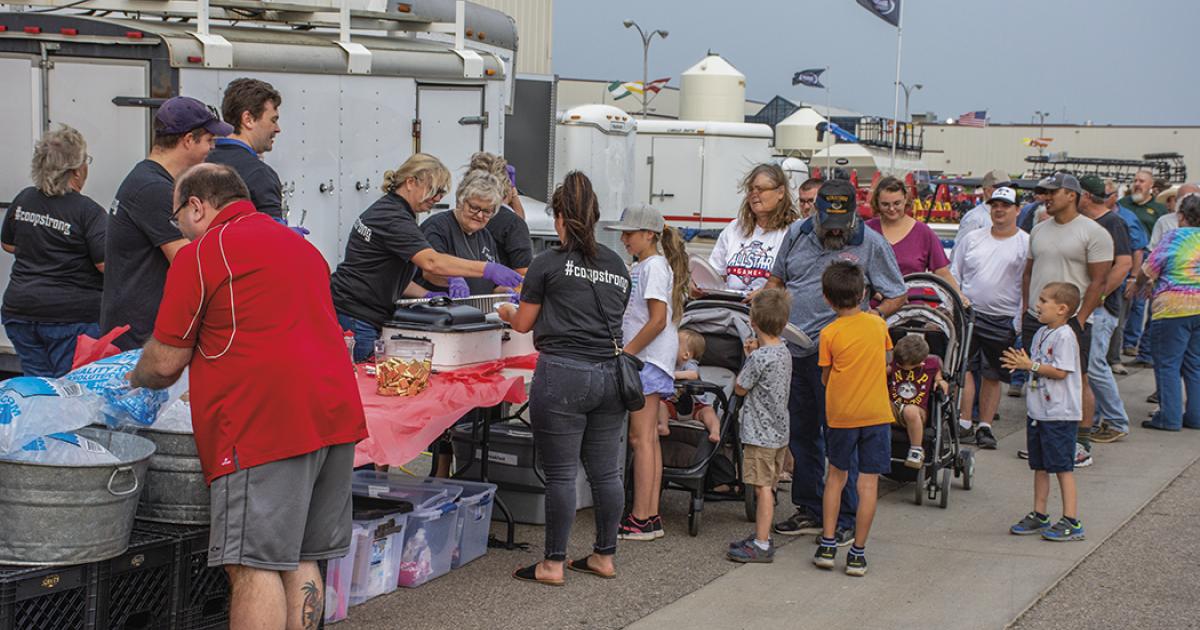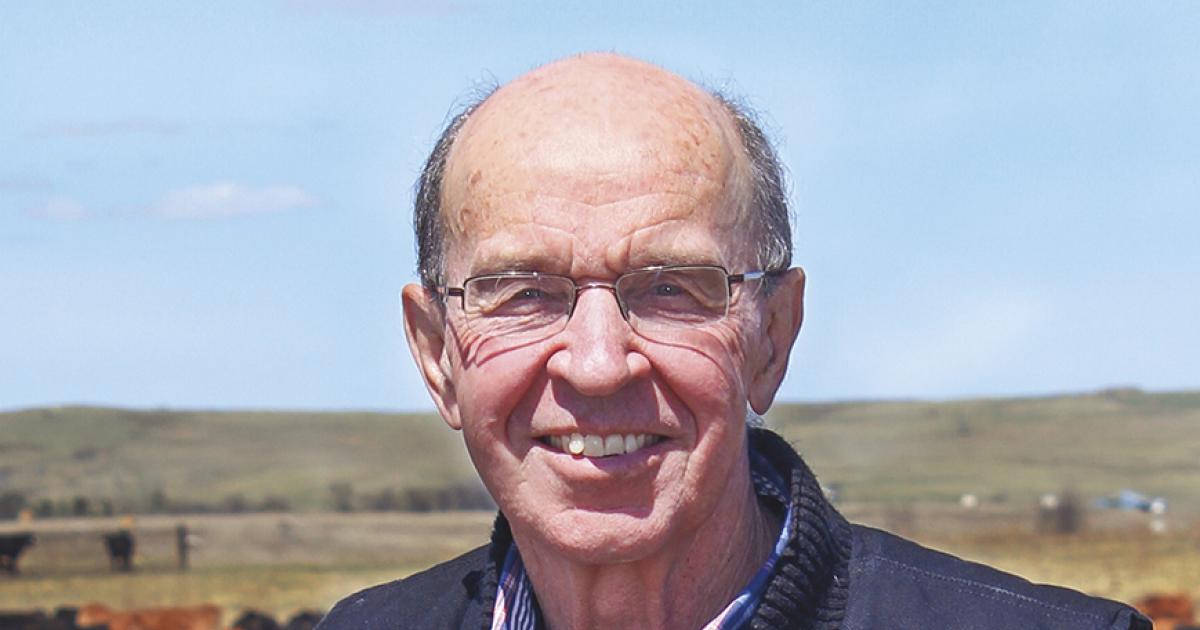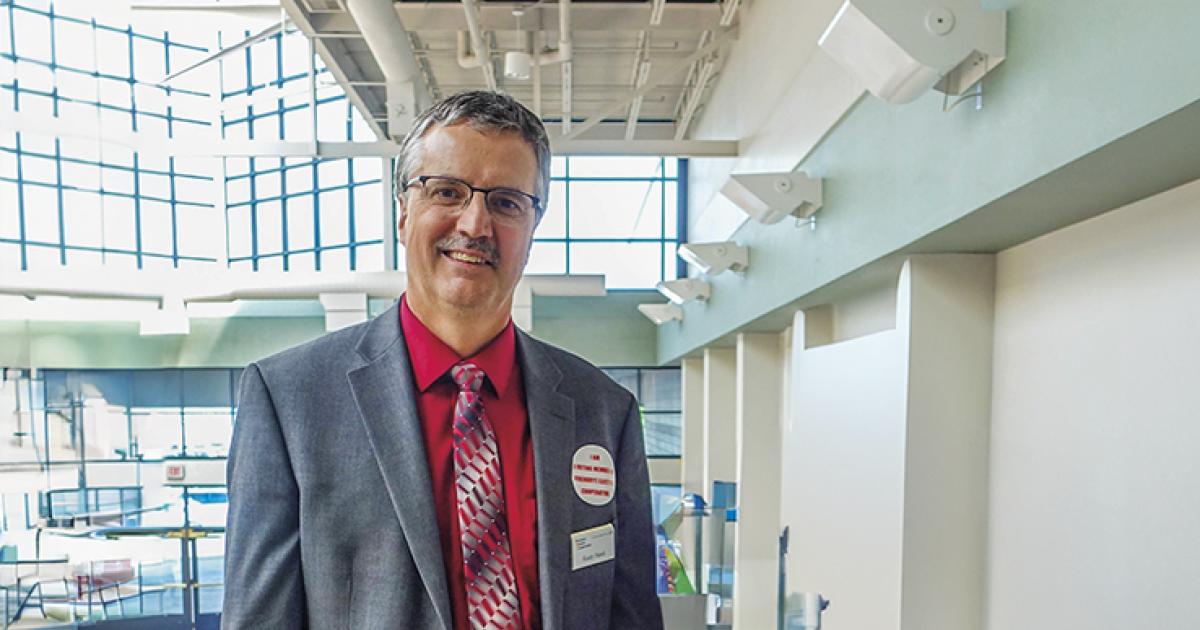A boy taps a sandal onto the opening of a pipe to play a note in the Magic City Discovery Center's Sound Sensations gallery.
“This will never happen in Minot” was what some people thought of the shiny new $20 million Magic City Discovery Center, which is now the most talked about attraction in the Magic City.
The 28,000-square-foot facility opened May 5 and has 12 galleries filled with more than 150 exhibits designed to teach kids in STEAM (science, technology, engineering, art and math) with fun and engaging activities.
“The hard work and dedication the team put into making this center move from a thought to a reality is a case study in what a community can do when it works together,” says Tom Ross, Minot mayor. “As a father, walking through the doors of this center is something I look forward to sharing with my grandkids.”
Executive Director Wendy Keller says there were a number of obstacles, including trying to raise funds during the COVID-19 pandemic, but organizers were determined.
“We were not going to quit,” Keller says. “We knew we were going to open someday.”
A COMMUNITY EFFORT
The idea for the center began in 2013 with a small group of people who formed Give 360, which was then a new charitable organization. Members are required to donate $360 a year, and they vote each fall on how to spend the pool of money. Some of the group’s first grants went toward the children’s museum idea.
The idea gradually took hold, and the group started a smaller version of a children’s museum within the Minot Airport Museum, which was open for four years during the winter months. That little children’s museum helped the project gain steam.
“One of the biggest issues then was that no one really knew what a children’s museum was,” Keller says. “We decided that would be a good way to put our toes in the water, educate the community and show some of the benefits.”
The Discovery Center is not actually considered a children’s museum, nor is it a science center, Keller explains, but rather a hybrid of the two. Children’s museums typically focus on exhibits for younger children and science centers focus mainly on science, technology, engineering and math (STEM). The Discovery Center has all that, plus an emphasis on art.
For example, one exhibit allows children to play with patterns, including making their own tessellations, which are a series of geometric shapes with no overlaps or gaps. Tessellations can be seen in famous works of art and in math books as geometry lessons. There are also stations where kids can paint and produce other art.
The three-story building has themes at each level, and many reflect the Minot area. The lower level has a water flow exhibit that allows people to create dams and see how obstacles affect the water flow, like what might happen in the Souris River.
Level one features a Smithsonian Spark Lab, Pattern Place and Air Forces exhibits, where you can test the efficiency of wind turbines with different blades. It also features the entry to the 37-foot-high Magic Climber. The climber has a structure that looks like an oil derrick to represent the oil industry.
Level two has the Sound Sensations, Light Lab, Digital Worlds and Move exhibits.
Level three of the center includes a lobby and rooftop space for meetings. Because the center was built atop Minot’s North Hill, visitors get a bird’s-eye view of the entire city, including the Souris River Valley that runs through Minot. The third level is also where you will see the B-52 atop the Magic Climber to represent the Minot Air Force Base, which is 12 miles north of Minot.
The centerpiece for the facility is a scale version of a B-52 Stratofortress bomber, which kids can climb into to play, and even communicates with kids below like they are air-traffic controllers and gets real-time weather data.
The center is funded by private and public funds. The U.S. Department of Defense awarded the center $6.3 million through a grant program to enhance the quality of life for military families. The state Legislature also kicked in $5.9 million and the city of Minot contributed $1 million. The center is on land owned by the Minot Park District, which holds the lease to the property at a fee of $1 a year for 100 years.
Scores of businesses and individuals donated to the center. Verendrye Electric Cooperative, which serves parts of Minot, does not serve the Discovery Center, but partnered with CoBank and Basin Electric Power Cooperative to donate $23,000 to the project. SRT Communications, a Minot telecommunications cooperative, donated $100,000 and provided in-kind labor of $50,000 to configure the building’s Wi-Fi and gig internet network systems.
For now, Keller and all those who helped get the center going are living in the moment, enjoying what was accomplished by the community. However, she does have a vision for the Discovery Center in the future.
“We want the Discovery Center to be sustainable and be around for the long term. We want kids to keep learning and want to come back,” she says.
Learn more about the Magic City Discovery Center at www.magiccitydiscoverycenter.com.
Tom Rafferty is member services and communications manager for Verendrye Electric Cooperative.



